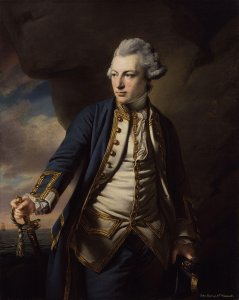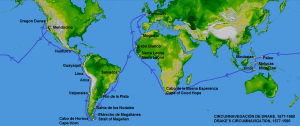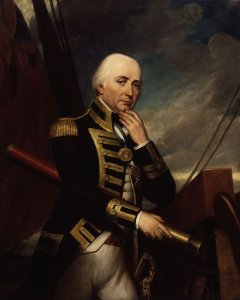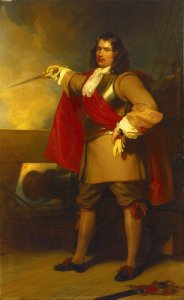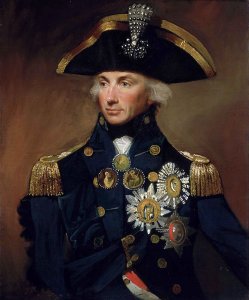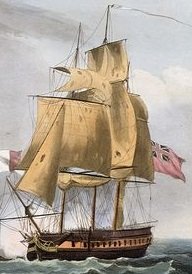Today in Naval History - Naval / Maritime Events in History
14th of September
some of the events you will find here,
please use the following link where you will find more details and all other events of this day .....
1779 - HMS Pearl (1762 – 32 – Niger-class) took Spanish frigate Santa Monica (32) off the Western Islands
HMS Pearl was a 32-gun fifth-rate frigate of the Niger-class in the Royal Navy.
..................... and arrived at Spithead on 22 March. She was then paid off, sheathed in copper, and refitted at Plymouth. She served for a short while in the Channel before returning to the North American Station under Captain George Montagu.

Pearl engages the Santa Monica in the Action of 14 September 1779
1782 - Destruction of floating batteries at Gibraltar
The Great Siege of Gibraltar from 24 June 1779 – 7 February 1783 (3 years, 7 months and 2 weeks) was an unsuccessful attempt by Spain and France to capture Gibraltar from the British during the American War of Independence.
The British garrison under George Augustus Eliott were blockaded at first by the Spanish led by Martín Álvarez de Sotomayor in June 1779. This failed however as two relief convoys entered unmolested—the first under Admiral George Rodney succeeded in 1780 and the second by Admiral George Darby in 1781 despite the presence of the Spanish fleets. The same year a major assault was planned by the Spanish but a sortieby the Gibraltar garrison in November succeeded in destroying much of the forward batteries. With the siege going nowhere and constant Spanish failures the besiegers were reinforced by French forces under the Duc de Crillon who took over operations in early 1782. With a lull in the siege in which the allied force gathered more guns, ships and troops, a huge 'Grand Assault' was delivered in September 1782. This involved huge numbers—60,000 men, 49 ships of the line and ten specially designed newly invented floating batteries against 5,000 men of the Gibraltar garrison. This was a disastrous failure which caused heavy losses for the Bourbon allies.

1825 - Launch of HMS Princess Charlotte, 104 gun Princess Charlotte-class First Rate
HMS Princess Charlotte was a 104-gun first-rate ship of the line of the Royal Navy, launched on 14 September 1825 at Portsmouth. The occasion was notable for the fact that the gates of the dry dock into which she was to be placed burst because of the high tide and more than 40 people were drowned.

When first ordered in 1812 she was intended to be a second rate of 98 guns, but in the general reclassifications of 1817 she was reclassed as a first rate.

Scale: 1:48. Plan showing the body plan, sheer lines, and longitudinal half-breadth as originally prepared for Princess Charlotte (1825), a 100/110-gun, First Rate, three-decker.
1848 – Launch of French Henri IV, a 100 gun Hercule class at Cherbourg
The Henri IV was a 100-gun ship of the line of the French Navy, named after Henry IV of France. She was launched in 1848. Her shipwreck in a storm off Sebastopol in 1854 marked the beginnings of French meteorology.

Henri IV at the bombardment of Salé.

1/75th-scale model of Prince Jérôme, on display at the Swiss Museum of Transport. She was transformed into a sail and steam ship of the line while on keel.
1852 – Launch of French Jean Bart, 90 gun Suffren class Ship of the Line
The Jean Bart was a 90-gun Suffren class ship of the line of the French Navy, named in honour of Jean Bart.

The Jean Bart, painting by Louis Le Breton

Straight walls of an arsenal model of Suffren
1914 – HMAS AE1, the Royal Australian Navy's first submarine, was lost at sea with all hands near East New Britain, Papua New Guinea.
HMAS AE1 (originally known as just AE1) was an E-class submarine of the Royal Australian Navy (RAN). She was the first submarine to serve in the RAN, and was lost at sea with all hands near what is now East New Britain, Papua New Guinea, on 14 September 1914, after less than seven months in service. Search missions attempting to locate the wreck began in 1976. The submarine was found during the 13th search mission near the Duke of York Islands in December 2017.

HMAS AE1 underway in 1914
14th of September
some of the events you will find here,
please use the following link where you will find more details and all other events of this day .....
Naval/Maritime History - 27th of August - Today in Naval History - Naval / Maritime Events in History
Today in Naval History - Naval / Maritime Events in History 13 September 1801 - HMS Lark (16), Lt. Johnstone, captured Spanish privateer schooner Esperance, within the Portillo Reefs, Cuba. HMS Lark was a 16-gun ship sloop of the Cormorant class, launched in 1794 at Northfleet. She served...
shipsofscale.com
1779 - HMS Pearl (1762 – 32 – Niger-class) took Spanish frigate Santa Monica (32) off the Western Islands
HMS Pearl was a 32-gun fifth-rate frigate of the Niger-class in the Royal Navy.
..................... and arrived at Spithead on 22 March. She was then paid off, sheathed in copper, and refitted at Plymouth. She served for a short while in the Channel before returning to the North American Station under Captain George Montagu.
Pearl engages the Santa Monica in the Action of 14 September 1779
1782 - Destruction of floating batteries at Gibraltar
The Great Siege of Gibraltar from 24 June 1779 – 7 February 1783 (3 years, 7 months and 2 weeks) was an unsuccessful attempt by Spain and France to capture Gibraltar from the British during the American War of Independence.
The British garrison under George Augustus Eliott were blockaded at first by the Spanish led by Martín Álvarez de Sotomayor in June 1779. This failed however as two relief convoys entered unmolested—the first under Admiral George Rodney succeeded in 1780 and the second by Admiral George Darby in 1781 despite the presence of the Spanish fleets. The same year a major assault was planned by the Spanish but a sortieby the Gibraltar garrison in November succeeded in destroying much of the forward batteries. With the siege going nowhere and constant Spanish failures the besiegers were reinforced by French forces under the Duc de Crillon who took over operations in early 1782. With a lull in the siege in which the allied force gathered more guns, ships and troops, a huge 'Grand Assault' was delivered in September 1782. This involved huge numbers—60,000 men, 49 ships of the line and ten specially designed newly invented floating batteries against 5,000 men of the Gibraltar garrison. This was a disastrous failure which caused heavy losses for the Bourbon allies.
1825 - Launch of HMS Princess Charlotte, 104 gun Princess Charlotte-class First Rate
HMS Princess Charlotte was a 104-gun first-rate ship of the line of the Royal Navy, launched on 14 September 1825 at Portsmouth. The occasion was notable for the fact that the gates of the dry dock into which she was to be placed burst because of the high tide and more than 40 people were drowned.
When first ordered in 1812 she was intended to be a second rate of 98 guns, but in the general reclassifications of 1817 she was reclassed as a first rate.
Scale: 1:48. Plan showing the body plan, sheer lines, and longitudinal half-breadth as originally prepared for Princess Charlotte (1825), a 100/110-gun, First Rate, three-decker.
1848 – Launch of French Henri IV, a 100 gun Hercule class at Cherbourg
The Henri IV was a 100-gun ship of the line of the French Navy, named after Henry IV of France. She was launched in 1848. Her shipwreck in a storm off Sebastopol in 1854 marked the beginnings of French meteorology.
Henri IV at the bombardment of Salé.
1/75th-scale model of Prince Jérôme, on display at the Swiss Museum of Transport. She was transformed into a sail and steam ship of the line while on keel.
1852 – Launch of French Jean Bart, 90 gun Suffren class Ship of the Line
The Jean Bart was a 90-gun Suffren class ship of the line of the French Navy, named in honour of Jean Bart.
The Jean Bart, painting by Louis Le Breton
Straight walls of an arsenal model of Suffren
1914 – HMAS AE1, the Royal Australian Navy's first submarine, was lost at sea with all hands near East New Britain, Papua New Guinea.
HMAS AE1 (originally known as just AE1) was an E-class submarine of the Royal Australian Navy (RAN). She was the first submarine to serve in the RAN, and was lost at sea with all hands near what is now East New Britain, Papua New Guinea, on 14 September 1914, after less than seven months in service. Search missions attempting to locate the wreck began in 1976. The submarine was found during the 13th search mission near the Duke of York Islands in December 2017.
HMAS AE1 underway in 1914




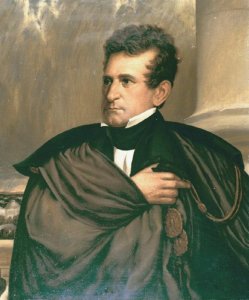
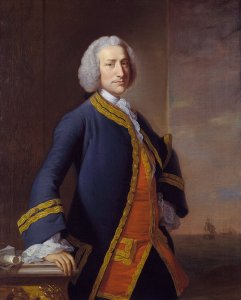
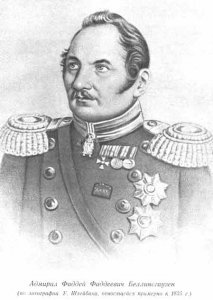

 , Virginia
, Virginia